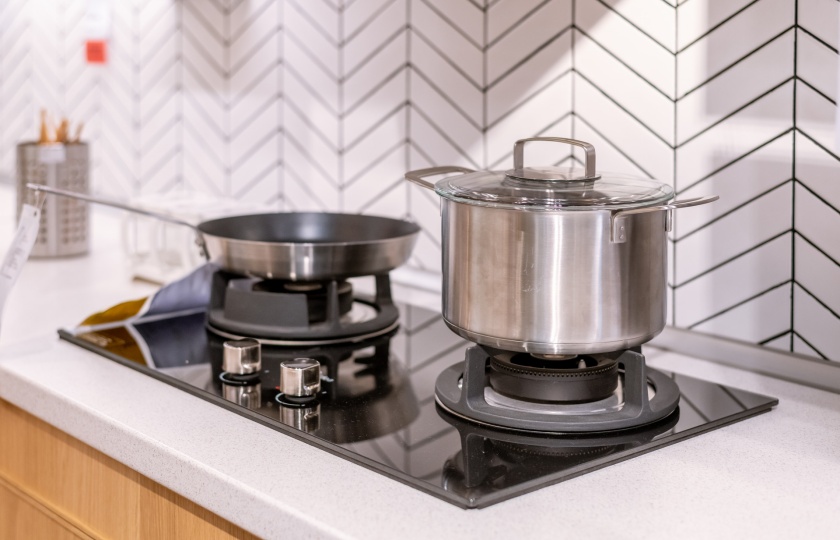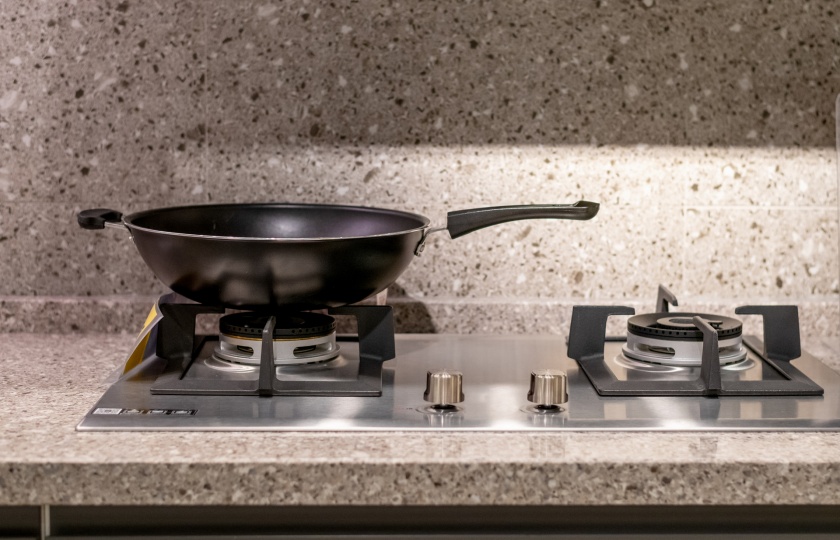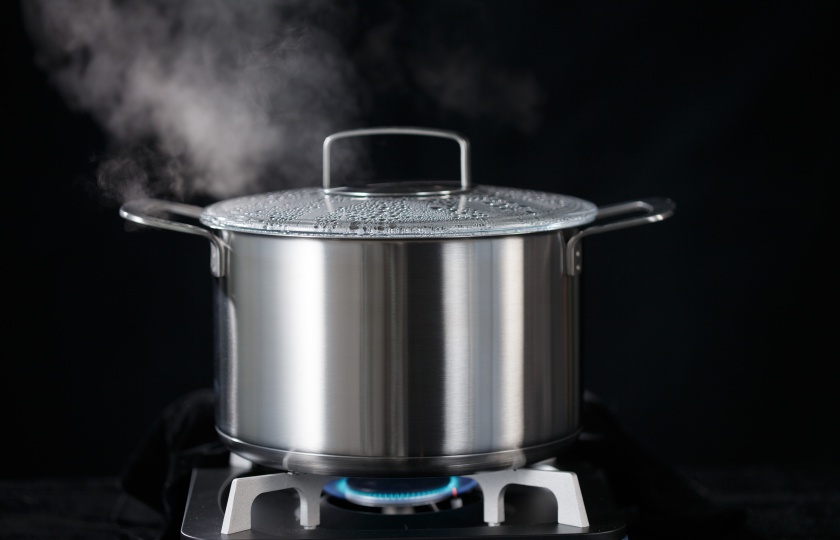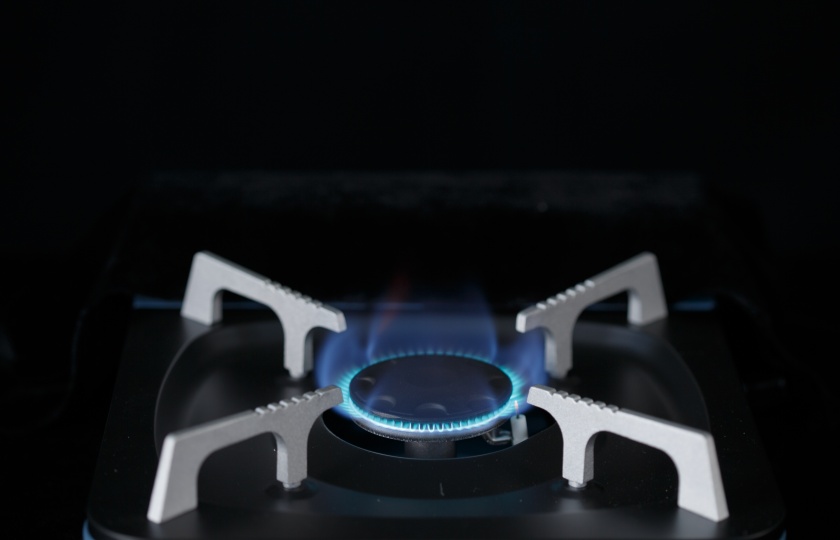The Best Gas Cooktop Ranges: Discover Top Choices for Your Kitchen

Gas stoves are common kitchen stoves in daily life. However, many people don't know what makes a good gas stove. Today, let's explore together "What is the best gas stove?"
What is the best gas stove?
First of all, it's clear that there is no such thing as the "best" gas stove. There are many brands and types of gas stoves, and each different brand has its own advantages and disadvantages. You can make a purchase based on your own needs. But a good gas stove should have the following features:
Firepower:
The size of the firepower is crucial. To meet the needs of daily stir-frying, the firepower should be strong enough. It should at least reach over 4.5 kW, and it would be even better if it can reach 5.0 kW or a higher power. This can make the ingredients cook quickly and lock in nutrients and flavors.
If you like making soups or stewing, then the firepower adjustment should be precise. The low fire should be able to stably maintain around 0.5 - 1.0 kW, ensuring that the soup can be slowly simmered to taste without overflowing or burning dry.
Energy efficiency rating:
The energy efficiency rating is directly related to energy consumption. The first-level energy efficiency is the most energy-saving. Over the long term, it can save a significant amount of gas expenses. If your family cooks frequently, choosing a gas stove with first-level energy efficiency can save a considerable amount of money over time.
Safety:
Safety is of utmost importance. A flameout protection device is essential. Once the flame goes out accidentally, it can quickly cut off the gas to avoid potential dangers caused by gas leaks. The child lock protection function is also very practical. If there are children in the family, it can prevent them from accidentally operating and turning on the gas, thus avoiding safety accidents.
Panel material:
The commonly seen ones are stainless steel and tempered glass. Stainless steel panels are durable, not easily scratched, and relatively easy to clean. You just need to wipe them with a damp cloth. Tempered glass panels have high aesthetics, are fashionable and beautiful, and oil stains can be easily wiped off. However, be careful to avoid impact from heavy objects to prevent cracking.
Brand and after-sales service:
Give priority to well-known brands. The products of big brands are of guaranteed quality, and their craftsmanship and technology are more mature. Moreover, a perfect after-sales service is also crucial. In case there is a problem with the stove, they can provide on-site repair in a timely manner, reducing troubles.
How do I choose a good gas stove?
When purchasing a good gas stove, you need to pay attention to the following points:
1. Selection of panel material
Ceramic panel: Easy to clean, high in aesthetics, good in heat resistance, but relatively expensive;
Microcrystalline glass panel: Easy to clean, not prone to scratching, high in aesthetics, with good decorative effect;
Tempered glass panel: Easy to clean, not prone to scratching, but poor in impact resistance. Choose one with a heat resistance of over 800°.
Stainless steel panel: Difficult to clean, prone to scratching, good in heat resistance, and low in price;

2. Firepower and thermal efficiency
Large enough high flame: Choose a gas stove with a firepower of over 4.5KW, which is more suitable for stir-frying over high heat;
Stable enough low flame: Choose a gas stove with a thermal efficiency of not less than 63%. The higher the thermal efficiency, the more fully the gas is burned, which is more gas-saving and the low flame is more stable;
3. Energy efficiency rating
First-level energy efficiency > Second-level energy efficiency > Third-level energy efficiency
It is recommended to choose a gas stove with a first-level energy efficiency rating. First-level energy efficiency has reached an advanced level, being more energy-saving and environmentally friendly;
4. Selection of protective rack
Choose a gas stove with an energy-gathering ring protective rack instead of an ordinary one. The fire of an ordinary protective rack is not concentrated, and the heating is uneven. The energy-gathering ring protective rack can concentrate the fire and is more windproof;
5. Materials of burner head and fire cap
Materials of burner head: Copper > Aluminum alloy > Iron;
Materials of fire cap: Copper > Stainless steel > Iron;
The less likely it is to rust and the higher the heat resistance, the better. For example, cast iron is prone to rusting and deforming, which can cause blockage of the air holes, thus reducing the combustion efficiency;
6. Ignition method
Electronic pulse ignition > Piezoelectric ceramic ignition;
Piezoelectric ceramic ignition has a low ignition success rate and a short service life. Electronic pulse ignition has a high success rate and is more durable;
7. Air intake method
Full air intake > Top air intake > Bottom air intake;
Choose a gas stove with full air intake. Full air intake combines top air intake and bottom air intake, with a high combustion efficiency. You can switch between high and low flames at any time. Note that the wooden board under the gas stove needs to have holes to ensure air intake;
8. Protection functions
Choose a gas stove with multiple protection functions. The protection functions are as follows:
Flameout protection: When the gas stove is accidentally extinguished during use, such as being blown out by the wind, extinguished by soup, or failing to ignite, it will automatically cut off the gas;
Dry-burning protection: The stove is equipped with sensors and thermistors to detect the temperature of the pot and determine whether it is in a dry-burning state. Once dry-burning occurs, it will automatically cut off the gas;
Child lock: To prevent children from accidentally triggering ignition and causing danger;
9. Installation method
Built-in / Built-in & Countertop > Countertop;
Built-in gas stoves are easy to clean and more beautiful, but ventilation holes need to be left for built-in ones;
10. Gas source selection
There are two types of gas sources, one is piped natural gas and the other is liquefied petroleum gas.
How to judge whether the firepower of a gas stove is uniform?
It can be judged by the following methods:
In daily life, first of all, I will judge by observing the color and height of the flame. Generally speaking, the flame of a gas stove should be light blue. At the same time, the height of the flame should be uniform, without the situation of being higher on one side and lower on the other side. If the flame color is found to be yellowish or the flame height is uneven, it indicates that the firepower of the gas stove is uneven.
Secondly, I will also use cookware to judge. Place the cookware on the gas stove, ignite the flame, and observe the heating situation of the bottom of the cookware. If the bottom of the cookware is heated evenly, without the phenomenon of local overheating or coldness, it indicates that the firepower of the gas stove is relatively uniform. On the contrary, if some parts of the bottom of the cookware are significantly hotter than others, it may be due to the uneven firepower of the gas stove.
Finally, I will also judge by adjusting the air shutter of the gas stove. The air shutter of a gas stove is a component for adjusting the air intake. By adjusting the air shutter, the size and shape of the flame can be changed. During the process of adjusting the air shutter, carefully observe the change of the flame. If the flame can quickly become uniform and stable after adjusting the air shutter, it means that the firepower adjustment system of the gas stove is relatively sensitive and reliable.
What are the advantages and disadvantages of built-in gas stoves and countertop gas stoves respectively?
The advantages and disadvantages of built-in gas stoves and countertop gas stoves are as follows:
Built-in gas stoves
Advantages:
Beautiful and elegant: It can be perfectly integrated with the kitchen countertop. The overall appearance is simple and high-end, enhancing the aesthetics of the kitchen.
Space-saving: It is embedded in the cabinet and does not take up additional kitchen space, making the kitchen cleaner and more spacious.
Easy to clean: It is tightly combined with the countertop, with relatively small gaps, and is not prone to getting stained with oil and food residues, making it more convenient to clean.
Diverse functions: It is equipped with a variety of functions such as timer shut-off and firepower adjustment, making cooking more convenient and safe.

Disadvantages:
Complex installation: It is necessary to reserve an appropriate opening size in the cabinet. The installation process is relatively complex and requires professional operation.
Inconvenient maintenance: Since the built-in gas stove is embedded in the cabinet, once a fault occurs, it is inconvenient to maintain and requires the removal of some parts of the cabinet.
Higher price: Compared with countertop gas stoves, the price of built-in gas stoves is usually higher.
Countertop gas stoves
Advantages:
Simple installation: There is no need to reserve an opening in the cabinet. Just place it on the kitchen countertop and it can be used. The installation process is simple and fast.
Affordable price: The price of countertop gas stoves is usually more affordable, making them suitable for families with limited budgets.
Flexible movement: It can be moved and relocated freely, making the kitchen layout more flexible and changeable.
Disadvantages:
Space-consuming: It takes up a certain amount of kitchen space, which may not be suitable for kitchens with limited space.
Inconvenient cleaning: Dirt and oil are likely to accumulate on the bottom and sides, making it relatively inconvenient to clean.
Lack of aesthetics: Compared with built-in gas stoves, the appearance of countertop gas stoves may be a bit ordinary and lack high-end atmosphere.
What accidents can the flameout protection device prevent?
The flameout protection device is a relatively good design and can prevent many accidental accidents from occurring:
For example, in a well-ventilated kitchen or when there is wind, the flame may be blown out by the wind. The flameout protection device can automatically cut off the gas within 60 seconds after the flame goes out to prevent gas leakage.
Secondly, during the cooking process, the soup or liquid in the pot may overflow and extinguish the flame. The flameout protection device can cut off the gas in time in this situation to avoid continuous gas leakage.
If the gas stove fails to ignite and the flame cannot burn normally, the flameout protection device will detect the absence of the flame within a short time and automatically close the gas passage.
There is also the possibility that the gas stove may be accidentally extinguished during use due to insufficient gas source, nozzle blockage, etc. The flameout protection device can quickly cut off the gas after the flame goes out to avoid gas leakage.
Which stoves last the longest?
Common stoves in the kitchen include gas stoves, wall-mounted boilers, electric stoves, etc., and their service lives are different. The details are as follows:
1. Gas stove
The service life of a high-quality gas stove is about 10 - 15 years. If high-quality materials (such as copper fire caps or aluminum alloy fire caps) are selected and regular maintenance is carried out, the service life can be longer.

2. Wall-mounted boiler
The service life of a wall-mounted boiler is usually 10 - 15 years. According to EU standards, the designed service life of imported wall-mounted boilers can reach 15 years. However, the actual service life will be affected by the frequency of use, water quality, and maintenance.
3. Electric stove
The service life of an electric stove is relatively long, generally up to 20 - 30 years. Since an electric stove has no combustion process and fewer moving parts, the mechanical failure rate is relatively low. However, the operating cost of an electric stove may be relatively high, depending on the local electricity price.
4. Boiler
The service life of a traditional boiler is also long, generally 20 - 30 years. The boiler heats water and distributes it to radiators or underfloor heating systems. The structure is relatively simple, with few moving parts, and the durability is relatively high.























